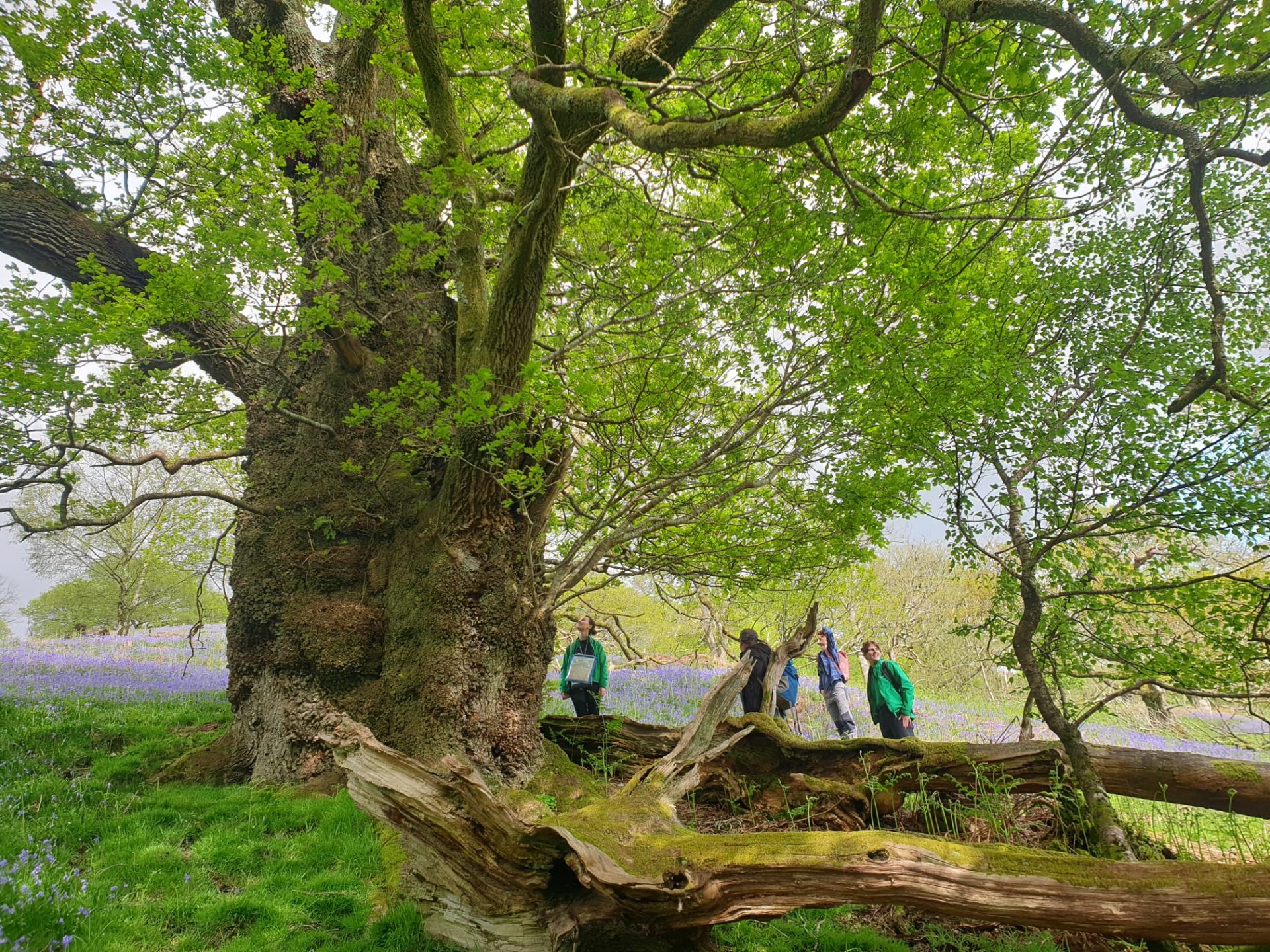Summary
This project will gather evidence to better understand the social and cultural value of Trees outside Woodlands in peri-urban and rural areas (ToWPUR). ToWPUR make up almost one fifth of tree cover in Great Britain yet remain an understudied part of English treescapes.
The England Tree Planting Programme (ETPP) looks set to dramatically change the rate of woodland creation and expansion in coming years. By addressing the evidence gap around social and cultural values and ToWPUR, this research will support the ambitions of the ETPP while feeding into a variety of policy aims relating to the societal benefits and impact of tree-planting and management.
This project is part of the Nature for Climate Fund.

Research Objectives
- Better understand the social and cultural value of ToWPUR amongst a range of publics, especially in relation to tree planting and establishment.
- Build an interdisciplinary understanding of the value of ToWPUR through close working with the project’s natural science counterpart (The ecological function of Trees outside Woodland).
- Provide evidence relating to social and cultural values to inform policy, research, and management of ToWPUR.
Findings and Recommendations
WP1 – Summarising and scoping
We found that:
- ToWPUR offer substantial wellbeing benefits and enable nature connection.
- The arts and humanities have long explored real and imagined ToWPUR, recognising the diversity of representations and human-tree interactions. These approaches can represent, explore and engage types of values that traditional scientific methods cannot, particularly with regards to emotion, beauty, imagination, cultural memory and human connection.
- Conceptualising ToWPUR values can be theoretically complex, but it is important to focus on approaches that can account for changes in values across time and that consider care, belonging, access, power and decision-making.
- There are considerable opportunities for increasing community engagement in land use decision-making in relation to ToWPUR.
WP2 – Mapping values in professional settings: Sycamore as ToWPUR
We found that:
- Professionals value sycamore in a variety of ways (including for their ecological/environmental benefits, aesthetic and cultural significance in certain landscapes, and as a resilient tree with strategic potential to mitigate tree loss to disease and contribute to future forest resilience). Most participants believed they approached sycamore pragmatically with a ‘right tree, right place’ attitude, which masked underlying values, attitudes and assumptions.
- Conservation professionals have historically expressed comprehensively negative attitudes towards sycamore, but our data shows attitudes are changing.
- There is a lack of up-to-date ecological evidence on both the benefits and disbenefits of sycamore within policy and practice guidance. This feeds into uncertainty about how to manage sycamore, especially on sensitive sites.
- The classification of sycamore as a native, naturalised, non-native species (or other) is contested. This reflects a frustration with existing metrics of value which do not account for the holistic, context-specific value of sycamore.
WP3 – Understanding value of specific ToWPUR: Dead and decaying ToWPUR
We found that:
- The majority of visitors were positive or neutral about visible dead and decaying trees.
- Visitors were most likely to notice their shape, structure and patterns, regrowth and things growing on the trees, and how they contrast with living or healthy trees. Negative attributes were less likely to be noticed. Nearly half of respondents agreed that such trees made them feel creative and inspired.
- Sixty three percent of respondents thought more dead and decaying trees should be left in the landscape to decay in place. With three-quarters of these reporting that their answer would change depending on the reasons for the tree death/decay, with many being concerned about the spread of diseases or pests to other trees.
- Visitors are generally knowledgeable about the benefits of leaving such trees in the landscape, with most knowing about biodiversity or wildlife benefits.
- Visitors to the least formal site felt most positive about the trees relative to the other sites and those from the most formal site the least positive but were still more positive than negative overall.
WP4 – Understanding values around ToWPUR and landscape change with young people
This research found that:
- The development and preservation of ToWPUR should be prioritised given the positive value-forming role they play for young people.
- Empowering young people through engagement in decision-making around ToWPUR can have clear benefits for community consent, value formation and nature connection.
- Targeted as well as more routine educational opportunities for young people to engage with trees should be encouraged and expanded.
- There are opportunities to make use of age-appropriate platforms as a productive route to messaging to young people about ToWPUR and trees more generally.
Latest Update
Drawing on ideas from our Project Advisory Group and the scoping work, we identified 3 empirical research projects and associated methodologies:
- Research into young people’s socio-cultural values in relation to Trees outside Woodland and landscape change.
- Research to understand visitor attitudes and values in relation to dead and decaying trees in the landscape (peri-urban and rural)
- Research to understand values and attitudes held by professional communities of practice in relation to Sycamore as a ToWPUR
Data collection for each of these is now underway. This project is set to finish in March 2025.
General Content
Downloads
Trees and wellbeing during the COVID-19 pandemic
Publication webpage
Trees Outside of Woodland: An exploration of social and cultural values: a photo essay
Publication webpage
A guide to working with the social and cultural values people hold regarding Trees outside of Woodland
Publication webpage
In Brief: Dead and decaying trees in the landscape: What do visitors think about them?
Publication webpage
Sycamore in future treescapes: Attitudes and values of tree and woodland professionals in the UK
Publication webpage
Funding & Partners
- This project has been funded through the Government's ‘ Nature for Climate Fund’
-
 DEFRA
DEFRA -
Project Advisory Group
- Arboricultural Association
- Forestry Commission
- Natural England
- Scottish Forestry
- Tree Council
- University of Exeter
- University of Leeds
- Welsh Government
